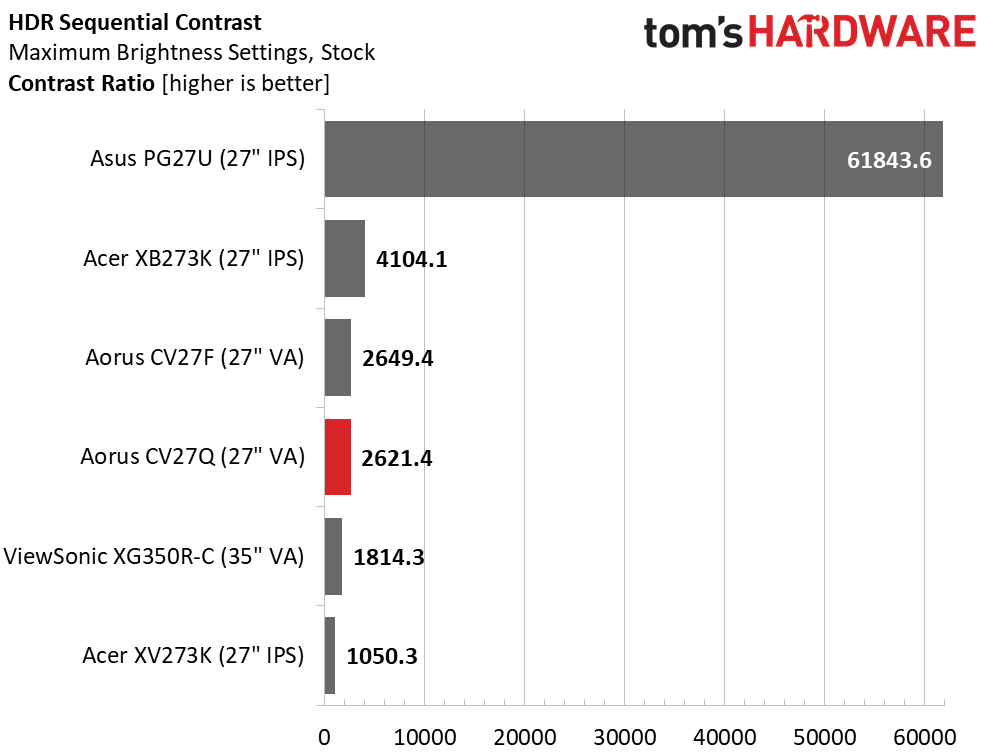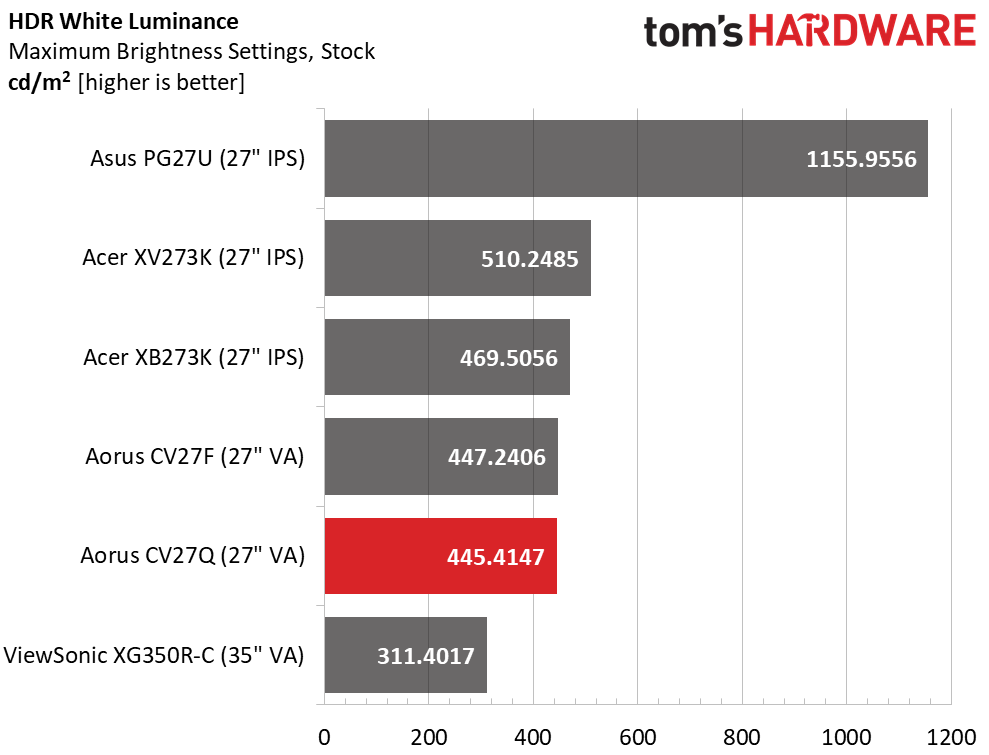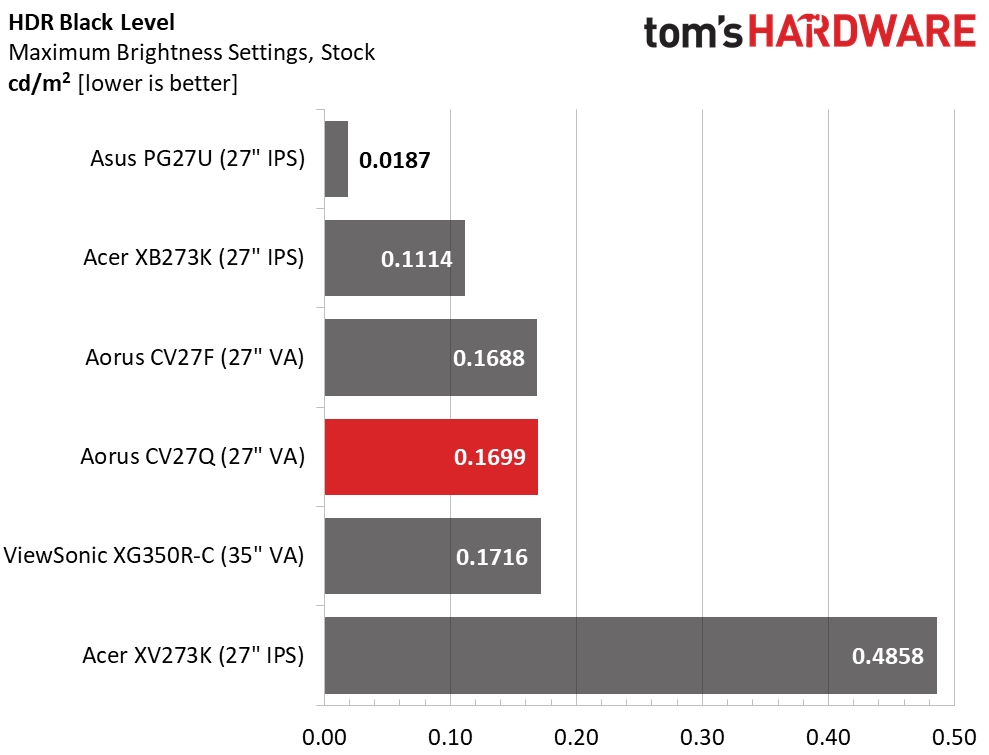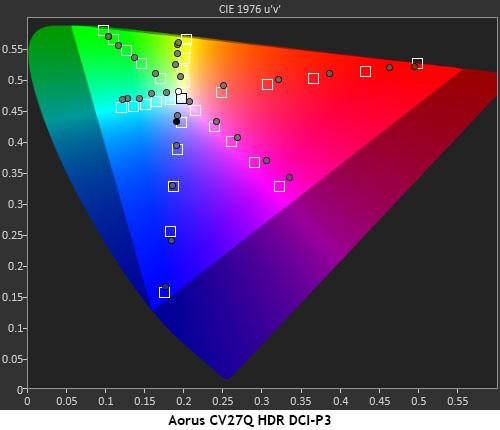Why you can trust Tom's Hardware
Applying an HDR10 signal to the CV27Q switches it automatically to HDR mode, where you can still use your choice of FreeSync or G-Sync. However, image settings aren’t available, and the backlight is locked on max brightness.
HDR Brightness and Contrast



The CV27Q is rated for 400 nits brightness in HDR mode and surpasses that by over 45 nits. We’ve included the PG27UQ here just to show what a premium HDR display can do. While a VA panel with 2,621:1 contrast in HDR mode looked great, it couldn’t hold a candle to the full-array local dimming monitor that hit nearly 62,000:1. But the Aorus offers good performance for the price, and actually beats the pricier XG350R-C ($400-$430 versus $640 at the time of publication). We’re satisfied with this result as it visibly enhanced games mastered in HDR.
Grayscale, EOTF and Color


The CV27Q’s luminance curve (EOTF) is right on the mark with a high 65% clip. Brighter material will tone-map (a graphics technique that mimics the appearance of HDR image with a more limited dynamic range) at that point, which the Aorus manages correctly. Grayscale tracking is solid until the mid-point, where it picks up a green tint. There is no way to fix this because all image controls are grayed out. We saw better HDR grayscale accuracy from the CV27F, so if that’s a factor in your purchase decision, sacrificing higher resolution might be justifiable.
In the DCI gamut chart above, we see similar tracking to what we measured in SDR mode. Reds are a little over-saturated in the mid-tones, and there are slight hue errors in the secondary colors. The effect on actual content, especially videos or games, wasn’t significant. On the Windows desktop, however, we could see the green tint, plus a small amount of edge enhancement.
MORE: Best Gaming Monitors
MORE: How We Test Monitors
MORE: All Monitor Content
Get Tom's Hardware's best news and in-depth reviews, straight to your inbox.
Current page: HDR Performance
Prev Page Grayscale, Gamma and Color Next Page Viewing Angles, Uniformity, Response and Lag
Christian Eberle is a Contributing Editor for Tom's Hardware US. He's a veteran reviewer of A/V equipment, specializing in monitors. Christian began his obsession with tech when he built his first PC in 1991, a 286 running DOS 3.0 at a blazing 12MHz. In 2006, he undertook training from the Imaging Science Foundation in video calibration and testing and thus started a passion for precise imaging that persists to this day. He is also a professional musician with a degree from the New England Conservatory as a classical bassoonist which he used to good effect as a performer with the West Point Army Band from 1987 to 2013. He enjoys watching movies and listening to high-end audio in his custom-built home theater and can be seen riding trails near his home on a race-ready ICE VTX recumbent trike. Christian enjoys the endless summer in Florida where he lives with his wife and Chihuahua and plays with orchestras around the state.